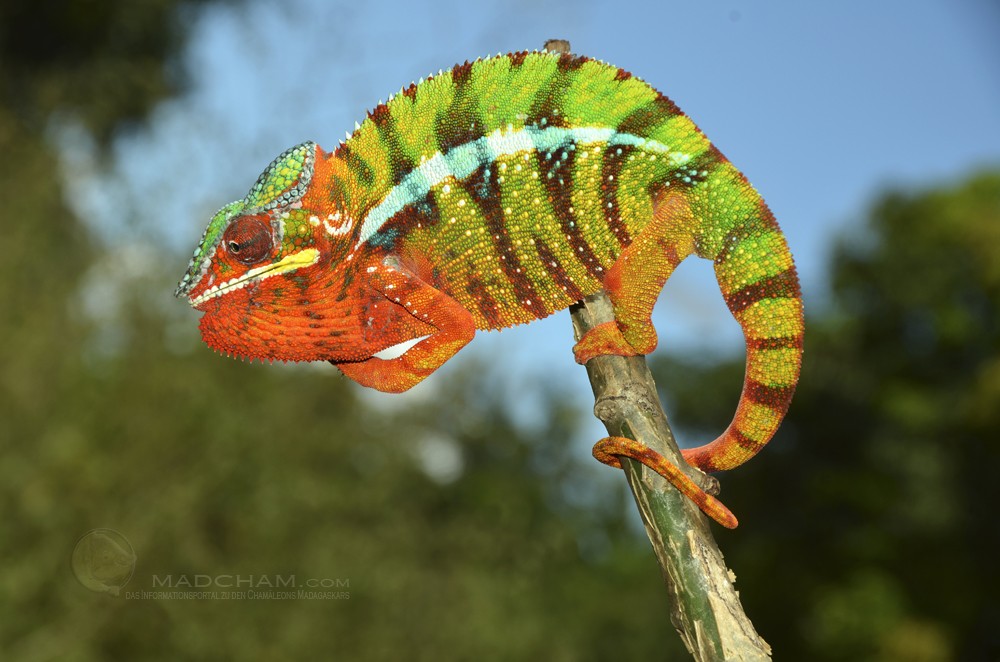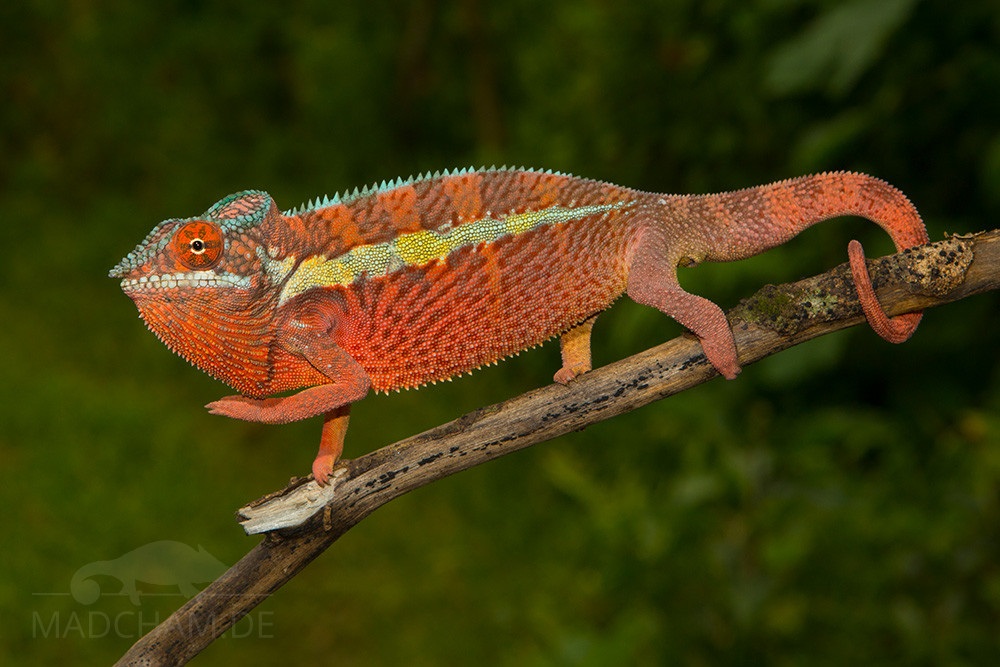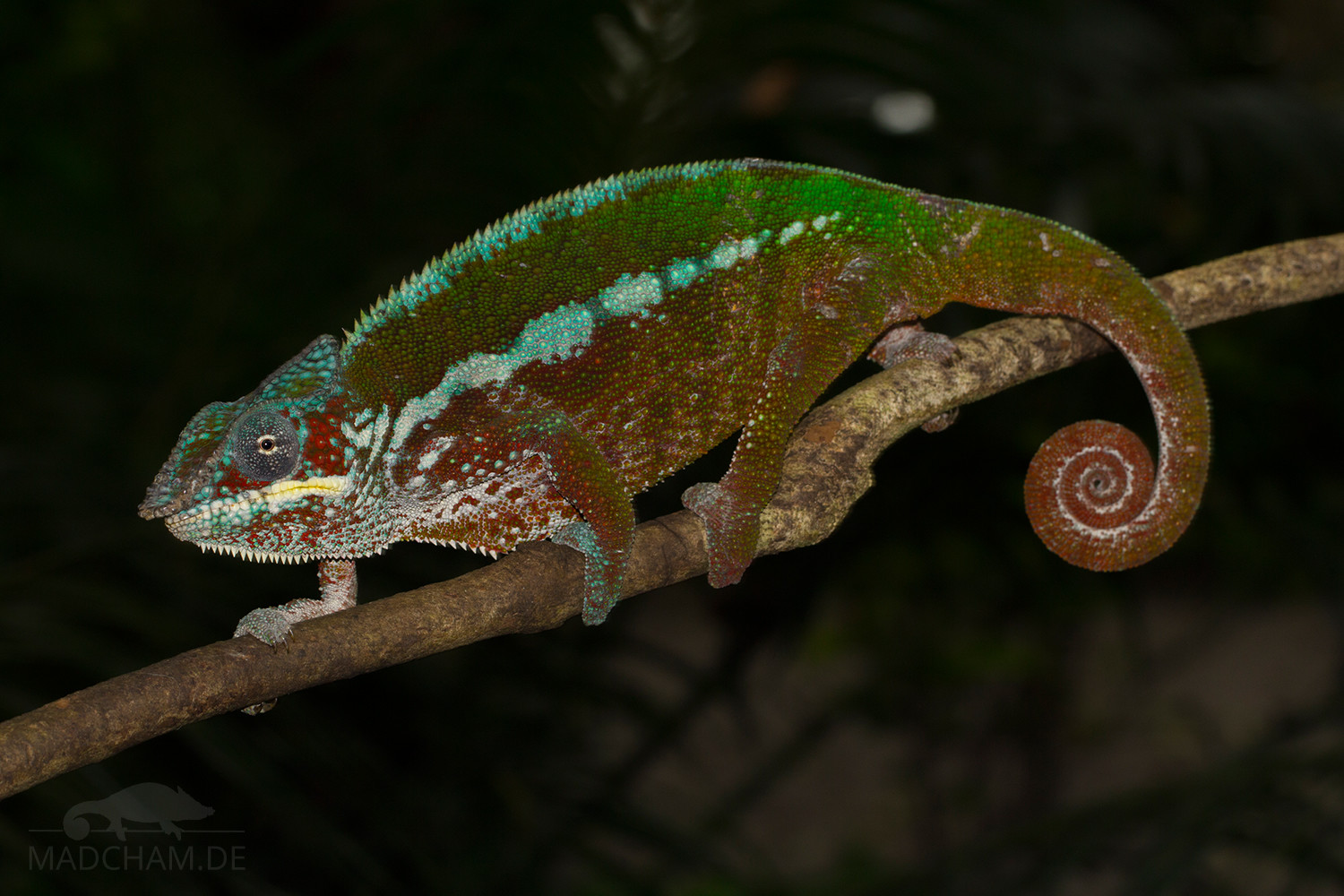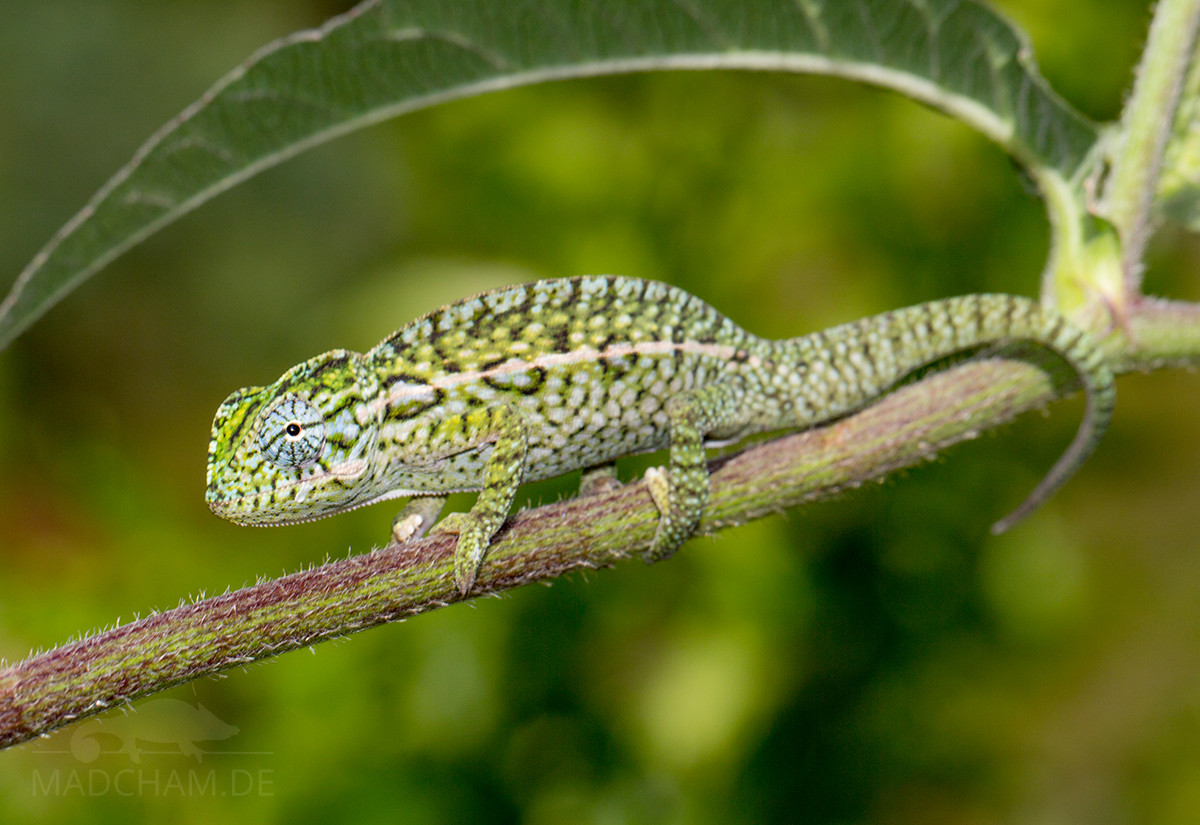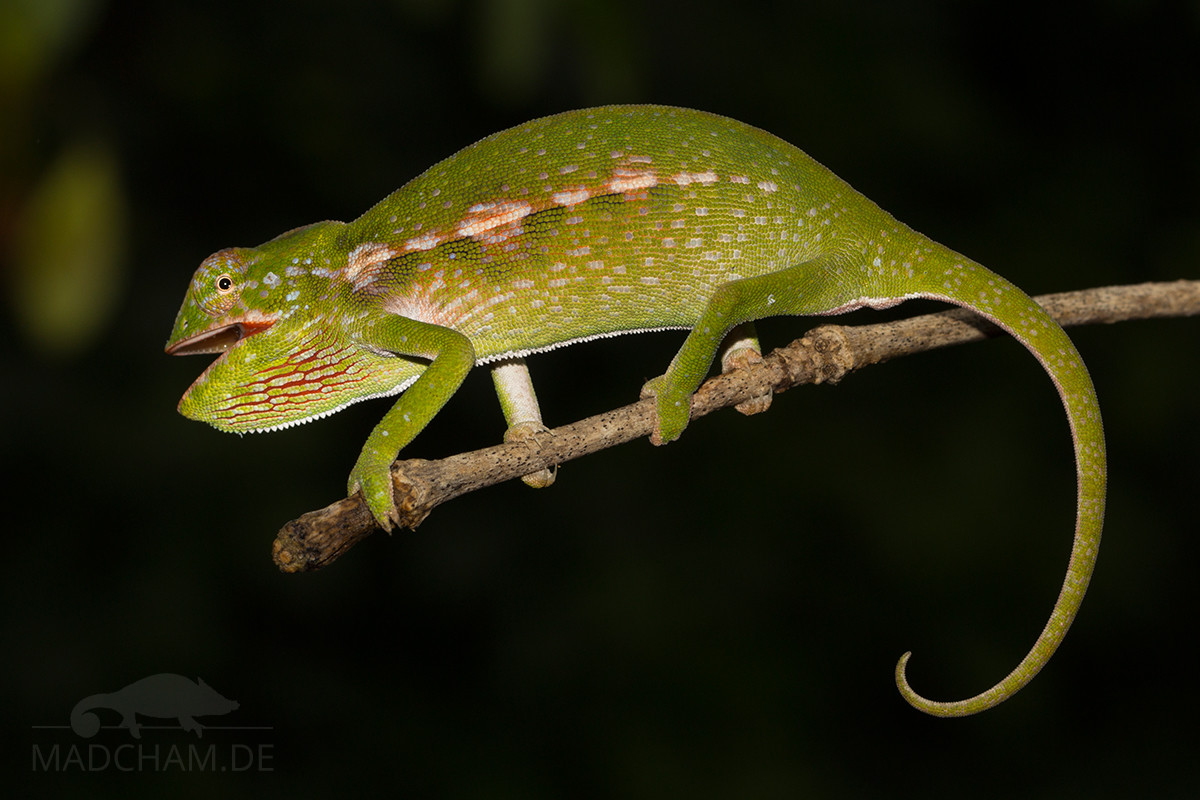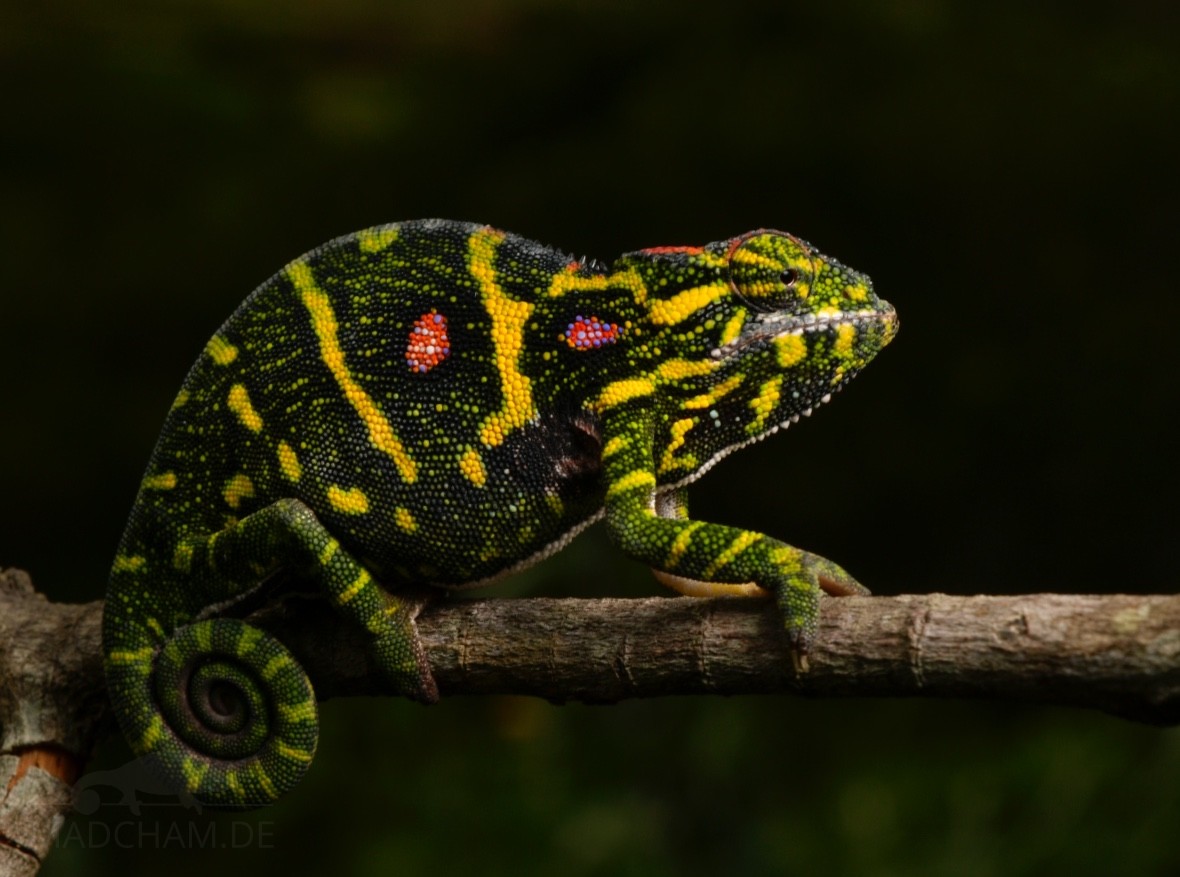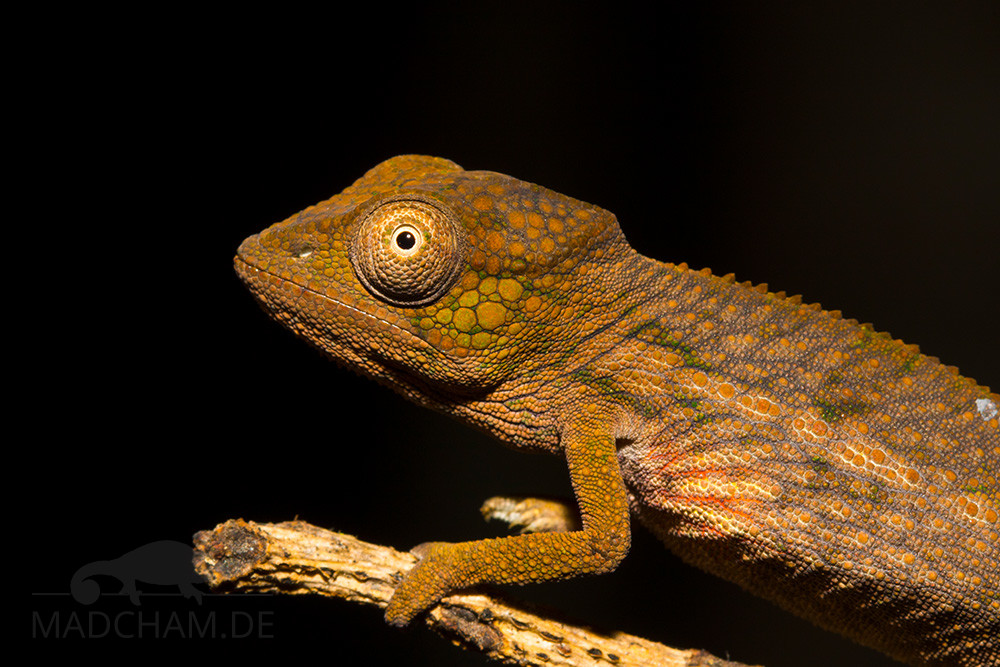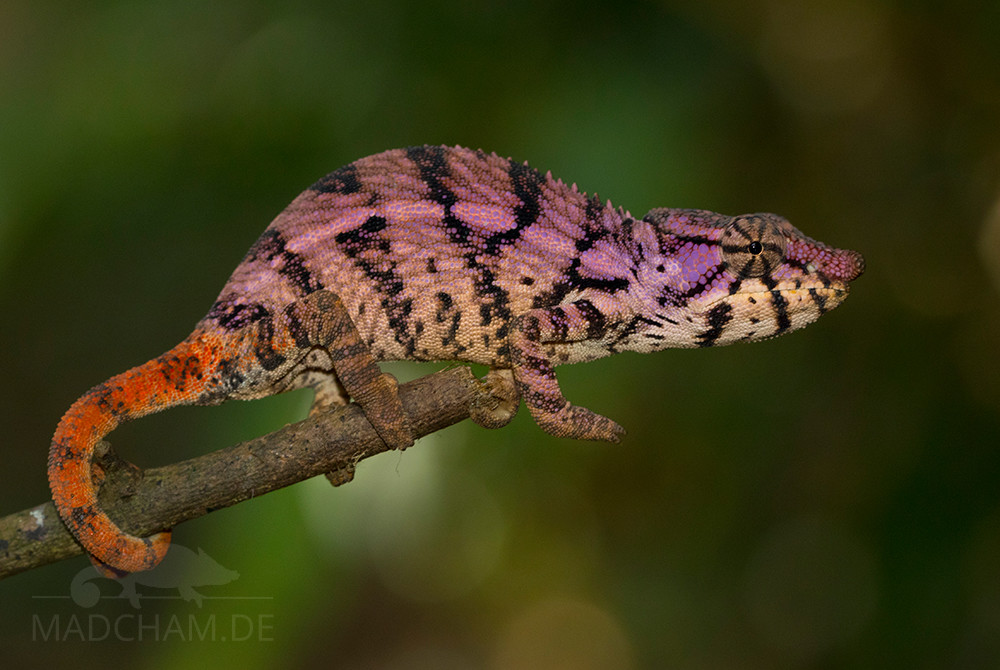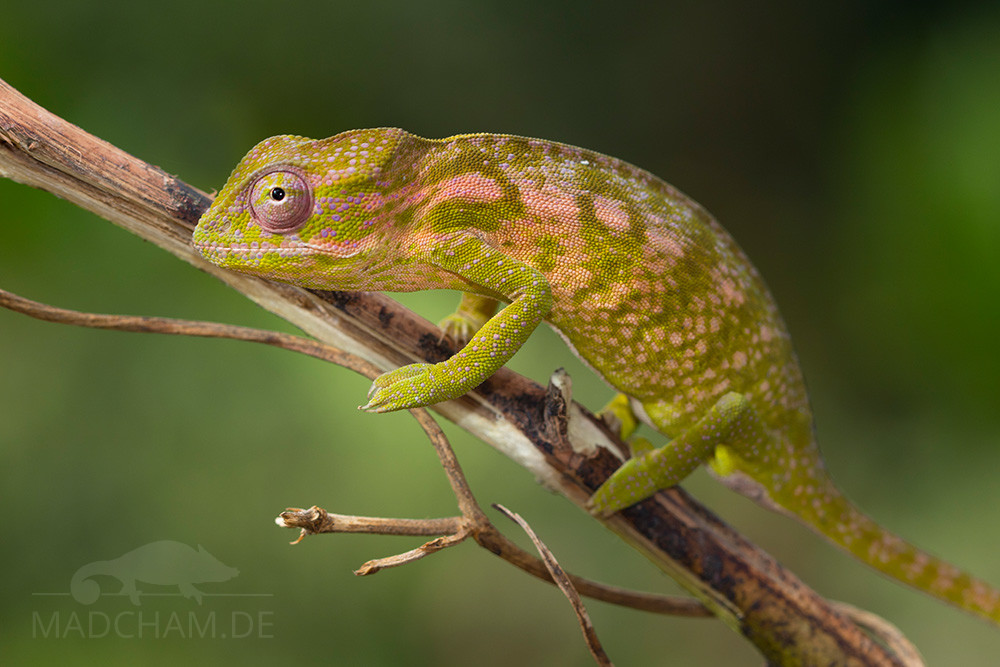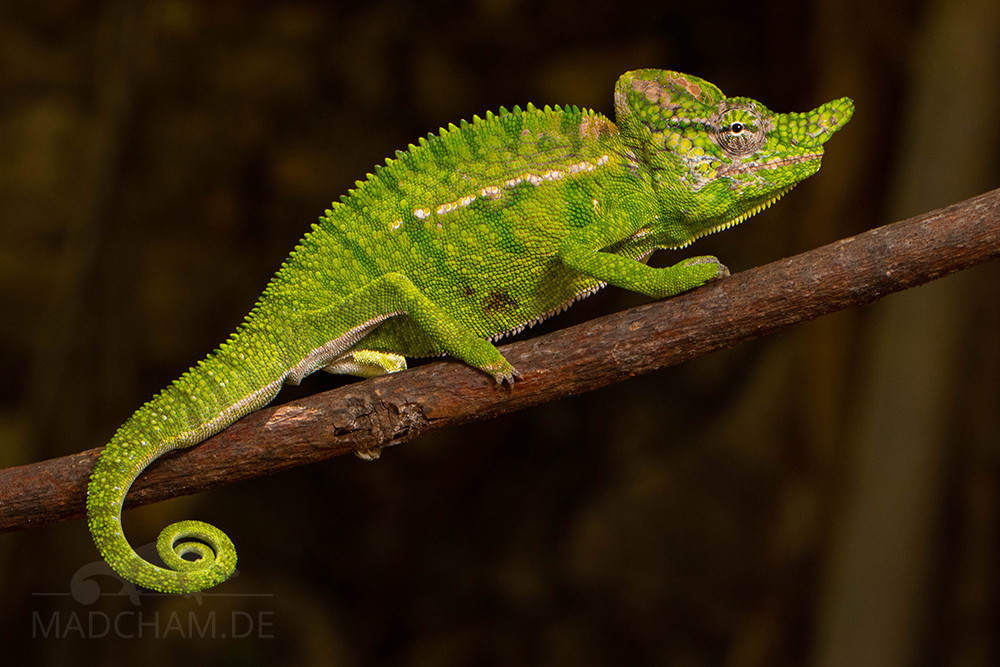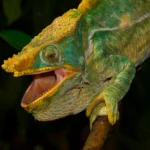Local form Ambilobe
Distribution of the local form: Ambilobe is a big, chaotic and very poor city in northwest Madagascar, located in region Diana near Ambanja. With about 50.000 inhabitants, it is a large city that is...
Local form Ankaramy
Distribution of the local form Ankaramy: The small city Ankaramibe is located in northwest Madagascar in region Mahajanga, directly at the RN6. The city partially consists of stone houses, but mainly of the usual...
Local form Ampitabe
Distribution of the local form Ampitabe: Lake Ampitabe is located about 50 km south of Toamasina (Tamatave), only about 200 m away from the Indian Ocean on the east coast of Madagascar. At the...
Furcifer lateralis
First description: (Gray, 1831) Origin of the species name: The English zoologist John Edward Gray was very brief in his description of this chameleon species: it consists of just keywords instead of a coherent...
Furcifer major
First description: (Brygoo, 1971) Origin of the species name: The French zoologist Édouard-Raoul Brygoo described the species at the Institute Pasteur in Antananarivo, Madagascar. He considered it to be a subspecies of the carpet...
Furcifer minor
First descriptions: (Günther, 1879) Origin of the species name: The German zoologist Albert Carl Ludwig Gotthilf Günther, then director of the Zoological Department of the Natural History Museum of London (Great Britain), received a...
Furcifer nicosiai
First description: Jesu, Mattioli & Schimmenti, 1999 Origin of the species name: The three Italian biologists Riccardo Jesu, Fabio Mattioli, and Giovanni Schimmenti from the Aquarium Genoa (Italy) dedicated the species to Guido Nicosia,...
Furcifer rhinoceratus
First description: (Gray, 1845) Origin of the species name: The English zoologist John Edward Gray described the species very briefly and named it after the Latin rhinoceros. By this, he meant the different pronounced...
Furcifer viridis
First description: Florio, Ingram, Rakotondravony, Louis & Raxworthy, 2012 Origin of the species name: The biologists Antonia M. Florio, Colleen M. Ingram from the Natural History Museum in New York (USA), Hery A. Rakotondravony...
Furcifer voeltzkowi
First description: Boettger, 1893 Origin of the species name: The paleontologist Oskar Böttger, then curator of the Senckenberg Museum in Frankfurt am Main, dedicated this chameleon species to the German zoologist Alfred Voeltzkow....

